Fairy Tales & Fables Part 1: Little Red Riding Hood, The Three Billy Goats Gruff, & The Three Little Pigs
There are so many reasons for parents to read fairy tales and fables to young
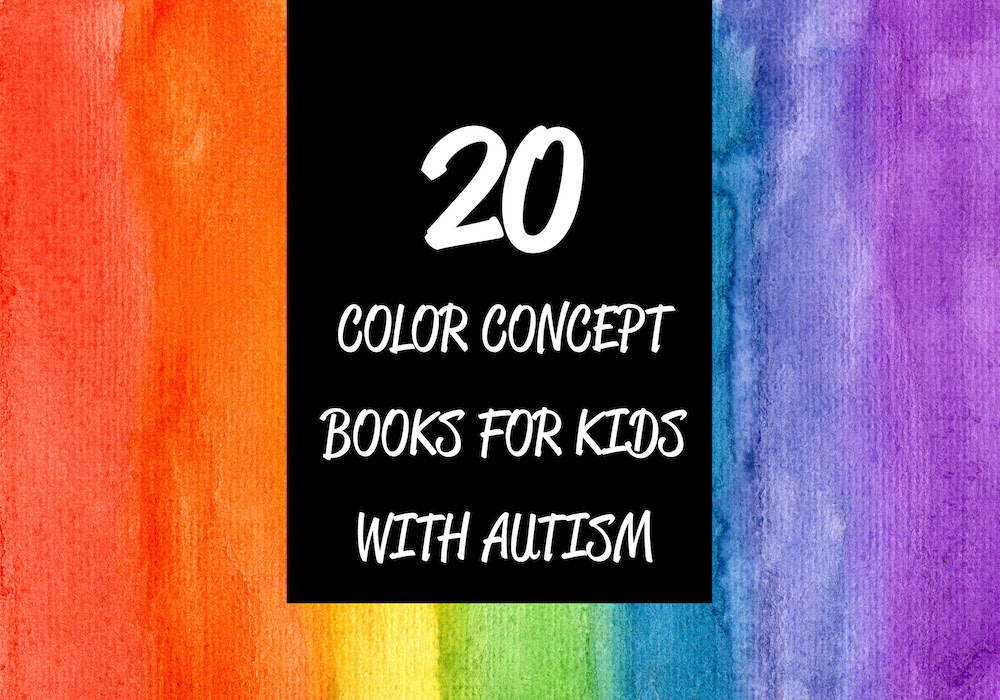
Matching colors, sorting by color, and the receptive and expressive labeling of colors—these are some of the first skills I remember my twin boys working on with their ABA therapists after being diagnosed with autism.
Because their therapists worked so hard to reward them and praise them when they showed their color skills, it soon became clear that color concept books were reinforcing. What I mean by that, is that even though it was hard to get my son Luke to attend to a book, he was interested in Pete the Cat: I Love My White Shoes because he could point to and correctly identify the prominently featured colors.
My son Harry, who was always more interested in being read to, first developed an interest in independently looking at books around this time too. His first solitary pleasure books were those big labeling books put out by DK Publishing with lots of pictures on spare backgrounds. Tabbed Board Books: My First Colors: Let's Learn Them All! was an early favorite.
Color concept books are wonderful, and important for generalizing knowledge about color vocabulary and concepts. I've rounded up 20 of my favorite board books and picture books that work particularly well for autistic kids.
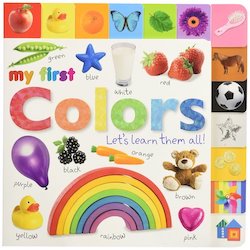
DK Publishing (2010); board book, $9.99

Using tabs to choose which of the 13 beautifully photographed spreads to look at, kids can easily navigate this large-scale board book, even if they have fine motor issues. Each spread has a rich variety of items to look at, label, and see the sight words for. Items are most often presented in their typical color (yellow rubber duck, brown teddy bear, green frog), so children can begin to form those associations. Although there is a lot on each page, the empty white background is a calming antidote to overstimulation.
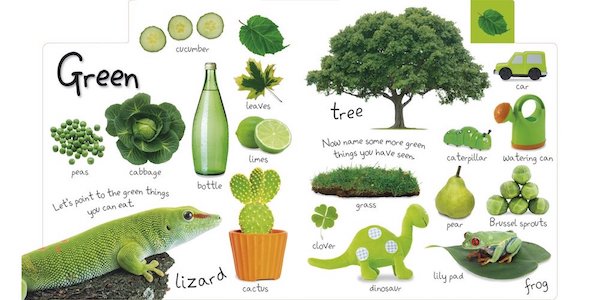
While My First Colors largely lends itself to a solitary experience, adults can read the activity prompts on each page and help a child to understand their meaning if they are ready ("Let's point to all the green things you can eat," etc.). For children who enjoy labeling, this book (and the entire series of Tabbed Board Books by DK Publishing) is a great vehicle for vocabulary expansion.
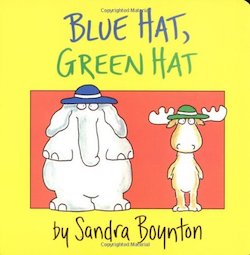
Little Simon (1984); board book, $5.99

This is Sandra Boynton at peak genius. An elephant, a moose, and a small bear wear a hat, a shirt, pants, a coat, socks, shoes, and swim trunks, but silly turkey never has his clothes on right! Simple text focuses on the clothes, colors, and running gag.
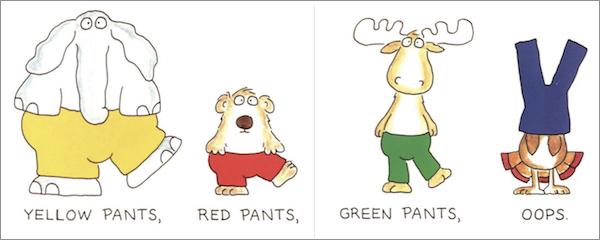
I love how the order of the animals and colors changes from page to page so that the child has to actually pay attention to the visuals. It's the perfect level of challenge for a child who is working on labeling colors and clothing or function of clothing.
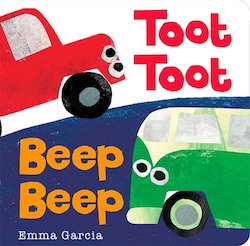
Boxer Books (2008); board book, $6.95

Is your kiddo into cars or trucks? Look no further! A little red jeep, a black sports car, a big blue van, a yellow city taxi, a long pink limousine, an old green camper van, and a tidy purple car are all featured in this bright, happy board book.
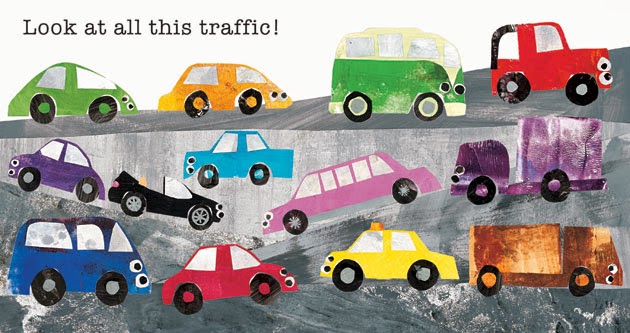
Each vehicle has its own sound (Beep Beep) in large typeface, and this provides extra fun and the opportunity for an interactive, multi-sensory experience. Making sounds is also perfect for kids who are still working on verbalizing. A simple and repetitive structure ('Beep beep' goes the little red jeep, and off he zooms!) helps kids predict when to participate.
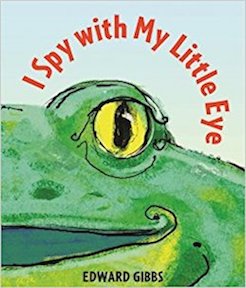
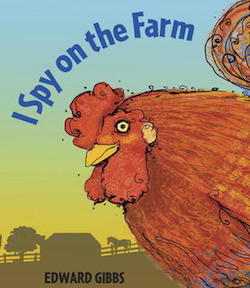
Candlewick Press/Templar Books (2011 & 2012); board books, $7.99

I'm a big fan of the whole I Spy series by Edward Gibbs, but these are the two that feature colors.
It's difficult to see online, but the books have a can-you-guess, cut-out concept. There is a round circle showing through the color of the next page. The left-facing page with the "I spy..." text shows the eye of the mystery animal. Read the clue and encourage your child to guess before turning the page.
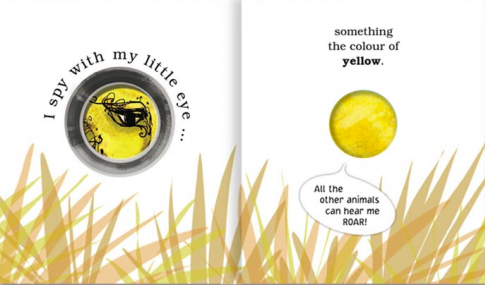
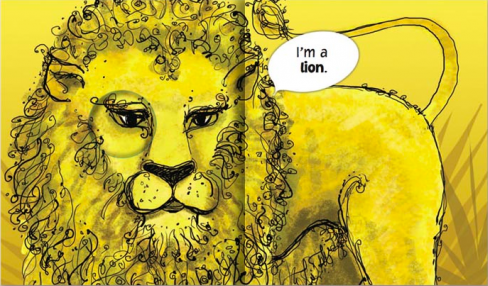
Can-you-guess participation books are wonderful for promoting social interaction. The fun of discovery propels kids through the pages; a great way to encourage an interest in books. For sensory-seeking kids, the cut out circles provide a slight tactile sensory detail. My son Luke loves to stick his fingers through them.
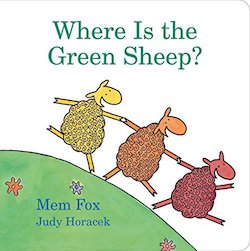
HMH Books for Young Readers (2004); board book, $6.99

Different pairs of complementary sheep (blue/red, bath/bed, swing/slide, up/down, near/far, wide/thin, and many more) are shown in this simple repetitive language book. Here is the W sheep, and here is the X sheep. Here is the Y sheep. And here is the Z sheep. But where is the green sheep? This structure repeats over and over again until the green sheep is finally found fast asleep on the final page.
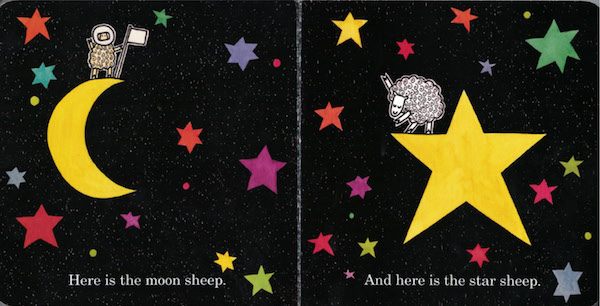
This is mostly a great opposites vocabulary building book, but I also think of it as a color book because the repeated goal of the book is to find the green sheep. That structure encourages kids to scan for color and really look at what's on each page.
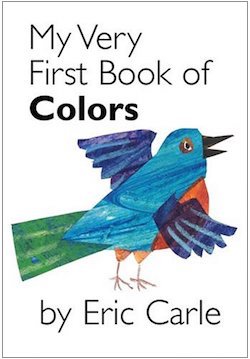
Philomel Books (2005); board book, $5.99

My Very First Book of Colors is part of a series of split-page matching concept board books by Eric Carle. I highly recommend saving money and buying them as a set.
The top pages show a color block and the sight word for that color. The bottom pages, in a completely different order, show an object in a single color (except for one colorful butterfly that matches with the page "many colors"). The objects are all easy to label words (a black umbrella, a brown shoe, a blue bird, a yellow lemon, etc.).
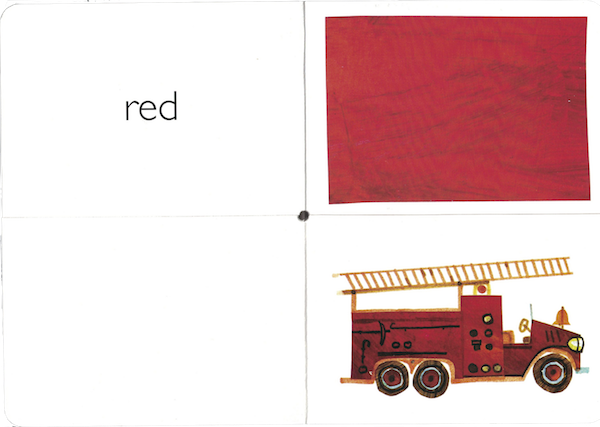
Kids love flipping through these books to make a match. They are just the right size to fit in little hands.
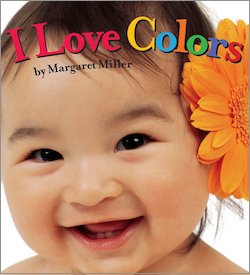
Little Simon (2009); board book $4.99

I Love Colors! features photographs of the faces of happy, multiracial babies/toddlers sporting some accessory in a bright color—an orange flower, a red bow, purple glasses, a yellow feather boa, etc. Looking at people's faces is such an important part of autism therapy for little kids, so picture books that focus in on the face are another good way to get in some practice.
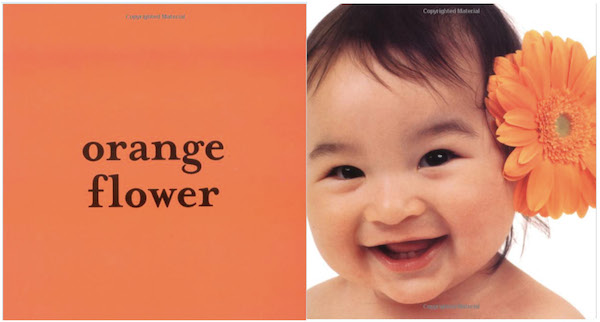
This is probably the most simple book on my list, and many will be tempted to discount it as too young for a child over 2, but a simple concept book may be just right for a slightly older child with issues attending to books, but who likes labeling colors (although it is too bad the faces skew so young).
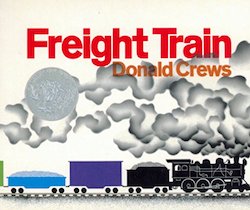
Greenwillow Books (1996); board book, $7.99

We approach a train from behind, catching up to the red caboose, and then moving up through six different colored cars ("Green cattle car," etc.) until we finally arrive at "Black steam engine." A few words on each page describe the train's journey (ie. "Going through tunnels" or "Moving in darkness.") In the end, we are left with a puff of smoke and an empty track.
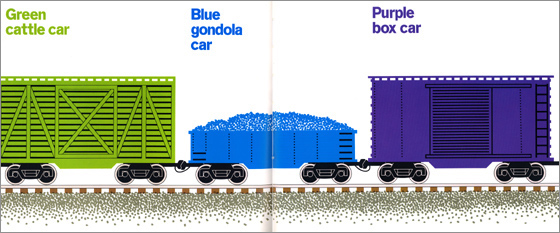
My son Luke loves all those YouTube videos with different kinds of trains (number trains, color trains, shape trains, etc.) and this book is basically the original. The visuals are simple, enchanting, and the pops of color are highly motivating for kids who enjoy labeling colors.
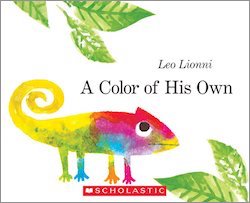
Scholastic (2004); paperback, $6.95

"Parrots are green" and "goldfish are red," but chameleons change color wherever they go. One sad little chameleon wishes that he too could have a color of his own in this sweet Leo Lionni story about self-acceptance and friendship. The collage art of earthy tones against a white background are delightful. And I love how Lionni weaves in the seasons by showing the chameleon changing color against the leaves of a tree.
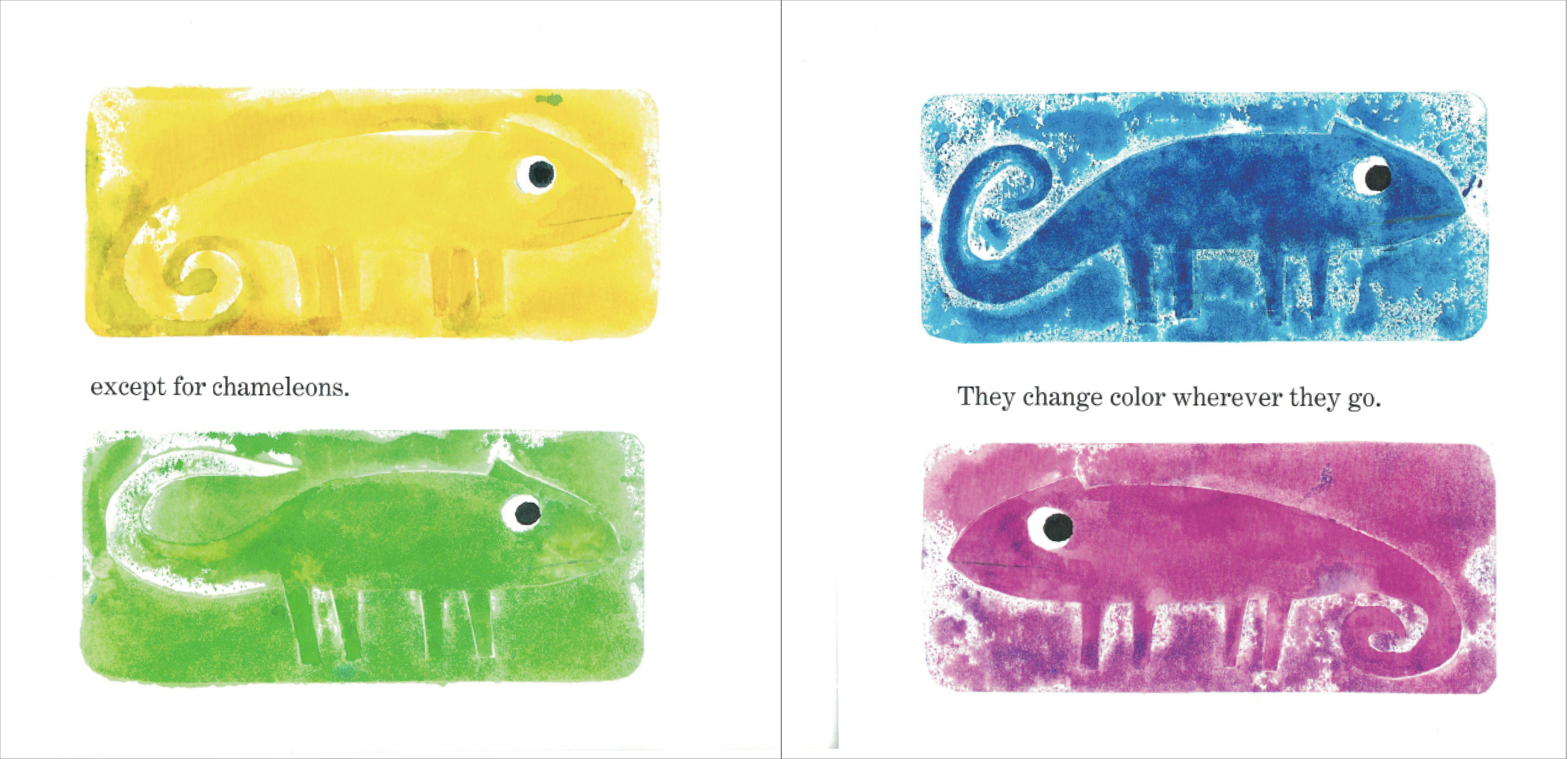
Maddeningly, there are some color issues with a few of this book's editions. Yellow sometimes looks like orange. Black looks purple. Green can look brown at times. The board book version is particularly problematic in this regard, which is why I'm reviewing a hardcover edition. Flip through the edition you find in your local bookstore to see how the colors look. Kids who are still learning to correctly label colors are less able to tolerate uncertain shades and ambiguity.
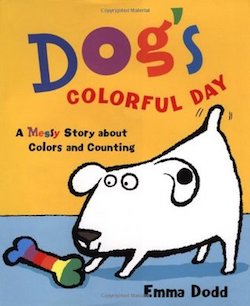
Puffin Books (2003); paperback, $6.99

Getting messy is always funny! Dog is white with one black spot on his ear, but throughout his busy day, he acquires many colorful spots: a splat of red jam falling at breakfast, an accidental dip of his tail into a bucket of blue paint, and so on. By the end of the day, Dog has ten colorful spots.
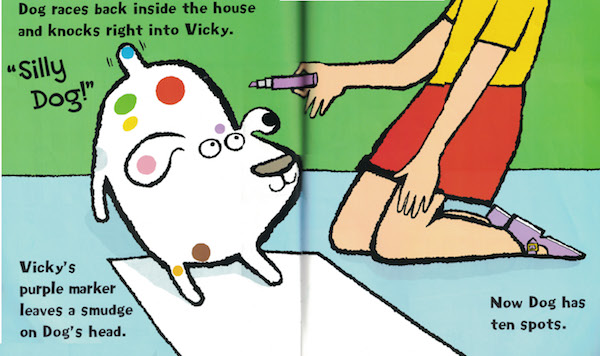
Each time something new drips or drops on Dog, we get both a sound effect (Splash!, Splosh!, Swish!, etc.) and a count (Now dog has two spots, etc.). The repetitive, building narrative is great for little ones whose attention is helped by listening to predictive stories with tight structure. And the running tally of the spots makes this just as effective a counting book as it is a color concept book.
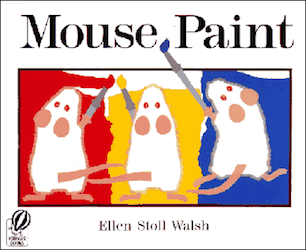
Houghton Mifflin Harcourt (1989); paperback, $6.99

Three white mice are good at hiding on a white piece of paper so the cat doesn't eat them. But they can't resist taking a dip in three bottles of paint they find one day when the cat is napping. Together they discover color mixing, and learn how to use red, yellow, and blue paint to make orange, purple, and green.
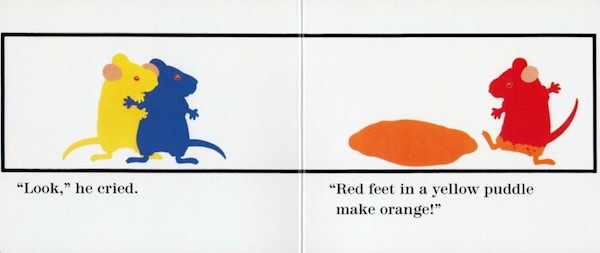
The mice are super-cute, the story is told with restrained simple language, and the bold primary colors against the white background work perfectly. There is just enough repetition for a child to catch on to the color mixing lesson. This is a perfect challenge for a child who is ready to learn a bit more about colors.
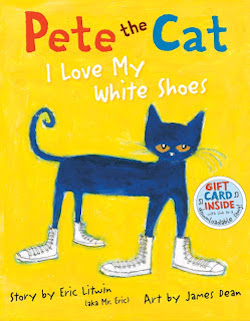
HarperCollins (2010); hardcover, $17.99

Eric Litwin is a genius at coming up with a formula for a book that combines predictive structure, repetition, academics, humor, and intraverbals. He also integrates songs into all his books, and this is no exception. Listen to the author reading/singing this book here:
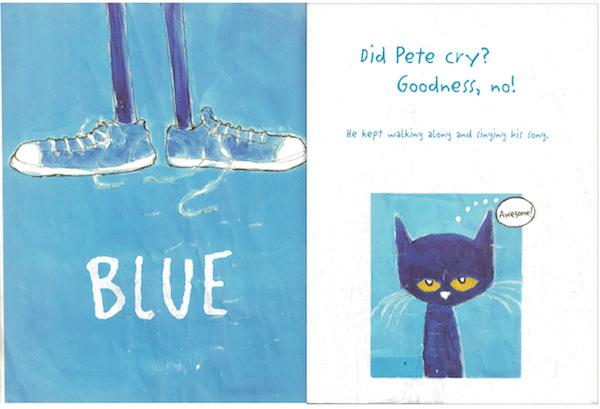
Each iteration of the story involves a full page of the new color with its sight word in large letters. Central to the story is the positive and upbeat attitude of Pete the Cat. That message, about how some times things get dirty or stained, but it's okay is a very good one for many kids with autism who might have a harder time with unexpected change.
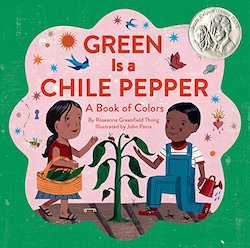
Chronicle Books (2014); hardcover, $16.99

Green is a Chile Pepper has the standard format of a color primer (a page with blue things, then a page with green things, etc.), but what makes it special is that it features Mexican/Mexican-American cultural objects seamlessly blended in with visually engaging scenes of relatable, everyday life.
If you are an English-speaking/non-Mexican heritage household, don't worry too much about this being too hard. Each color scene has a lot of things to look at that will be familiar for Americans of any background. On the yellow page, for example, from the text, my children didn't know what tamales or sweet corn cakes are, but they were familiar with tortillas and could easily label several other yellow things not mentioned but shown on the page (a guitar, a pig-shaped piñata, a bell, and a bird). And they certainly understood that the children wanted to eat the food in the window. Every page is like this, providing an entry point for a child from a non-Mexican background.
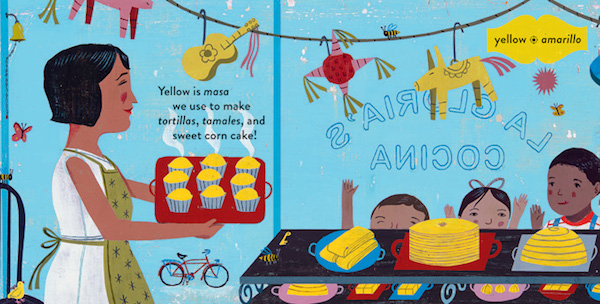
The folk-art style illustrations are beautiful. The text rhymes and is restrained in length. The Spanish words chosen were done so carefully as to be as accessible as possible for a broad audience. But particularly for families with Mexican heritage, this is sure to be a must-have.
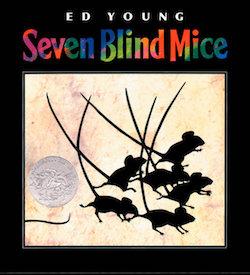
Puffin Books (2002); paperback, $7.99

Seven blind mice, all different colors, are surprised to find "Something" by their pond. One by one, they each go to investigate. The first six mice don't investigate fully, only touching one part of the Something, and so they come to the wrong conclusion about what it is. As each mouse explores their part of the elephant, what they imagine is pictured matching their own color. Red Mouse imagines the elephant's foot as a tall red pillar. Green Mouse imagines the elephant's trunk as a massive green snake. And so on.
Finally, White Mouse explores the entire Something and she realizes that it's an elephant.
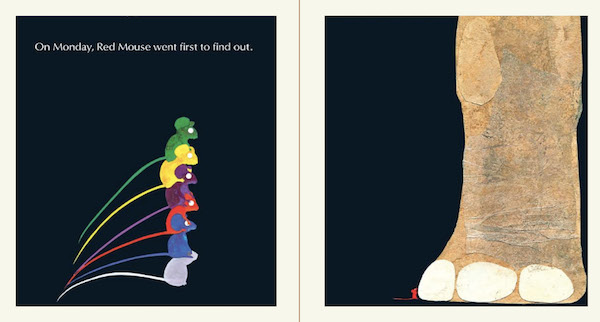
I could do without the confusing addition of the days of the week to this text, and I generally wish that the sentence structure was more uniform. Still, the overall plot is repetitive enough to follow. The best thing about this book is the story being told through the art. The colorful collages pop against the solid black background.
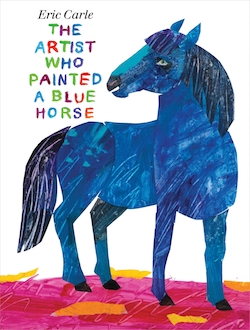
Philomel Books (2011); hardcover, $17.99

Rather than recommending the already well-known Eric Carle bestseller Brown Bear, Brown Bear, I am recommending his other popular color concept book (my personal favorite): The Artist Who Painted a Blue Horse.
This is one of Carle's simplest books. The artist lists all the animals he paints, each one rendered in an atypical and bright color, providing equal parts whimsy and fantasy.
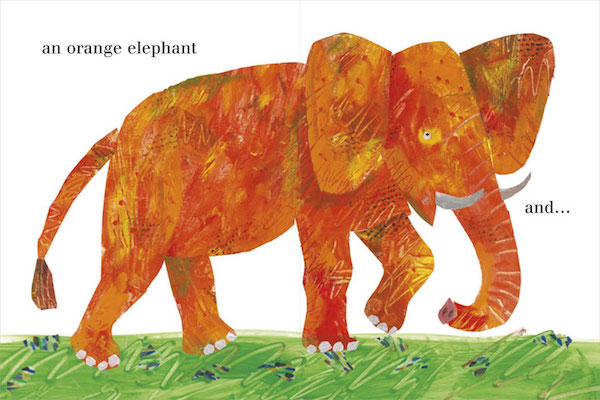
Like Brown Bear, Brown Bear, Carle draws children in with very familiar animals: a horse, crocodile, cow, rabbit, lion, elephant, fox, polar bear, and a donkey. But here the colors are completely unexpected, and this provides an intriguing challenge. We expect a fox to be red, not purple, so a child must pay close attention to the image and words and not rely on the memorized script, red fox. That need for attention to detail and the simplicity of the text is what makes this such a great book for practicing color labeling.
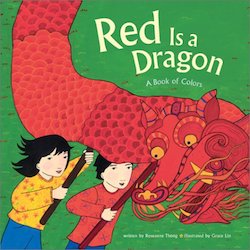
Chronicle Books (2001); paperback, $7.99

Another great multicultural book by Roseanne Thong! Red is a Dragon features a different illustrator (painter Grace Lin), who provides a pretty, Chinese visual aesthetic.
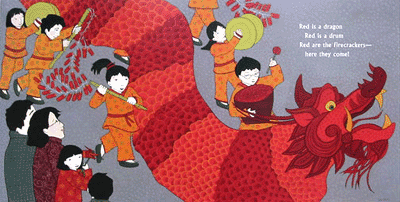
Like Green is a Chile Pepper, the structure here is the familiar color primer, so kids should find it easy to figure out what's going on. The text is likewise restrained; rhyming poetry featuring the colorful things in a Chinese-American girl's everyday life.
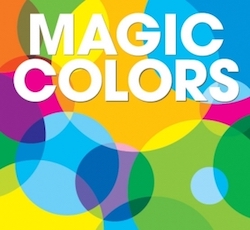
Boxer Books (2013); hardcover, $14.95

Magic Colors is perfect for sensory kids who enjoy tactile, auditory, and visual input. Each spread includes an acetate transparency that completes the image (as described in the text) by moving it from one page to the other. Brown leaves become green leaves. A yellow car becomes a red train. An orange sunset becomes a chocolate ice cream cone.
If you visit Patrick George's website, you can experiment with flipping some of the pages for yourself.
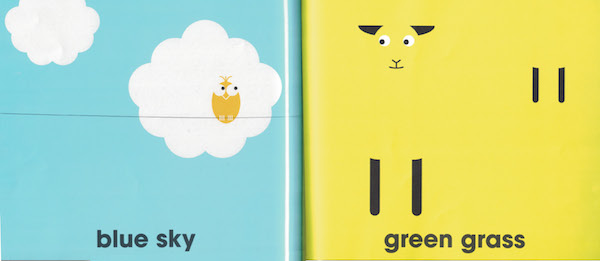
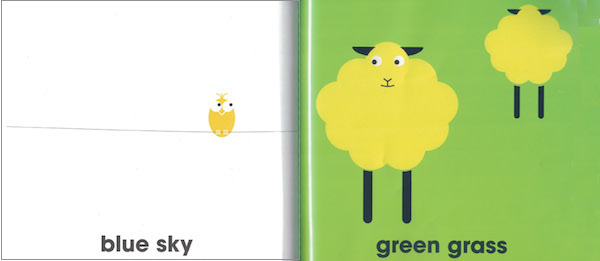
The design is modern, clean, and really pops. Kids will enjoy moving the acetate page back and forth. My son Harry loves stimming with every book in this series—and I love it when he can stim using a book. It's such an ideal way to get that input!
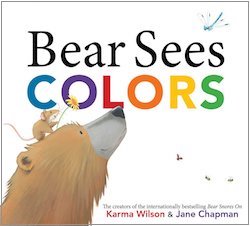
Margaret K. McElderry Books (2014); hardcover, $16.99

Mouse and Bear are walking;
they are chitter-chatter-talking.
So much for them to do.
And the bear
sees...
"BLUE!" your child is likely to answer as you turn the page to reveal a full spread of blue things. The well-constructed poetry encourages the child to spend time spotting things on the page "Blue, blue EVERYWHERE! / Can you spy blue with Bear?"
More animal friends join the fun and Bear goes on to explore red, yellow, green, and brown. Each scene has lots to explore beyond the items listed in the poem.
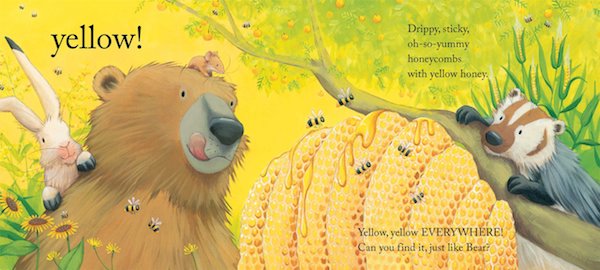
I really like how predictable and repetitive the story is and how effectively it encourages kids to shout out the next color. It's hard to get it wrong when the rhyme cues you and the spread gives you the visual prompt. A very good book for building confidence and participation. Bear Sees Colors is sure to be a hit with kids who love animals.
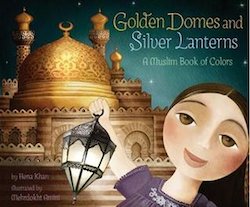
Chronicle Books (2012); hardcover, $17.99

A blue hijab. Brown dates for Ramadan. A green Quran. A red prayer rug. In this captivating color primer we are introduced to Islam through the eyes of a young Muslim girl going about her daily life with her family.
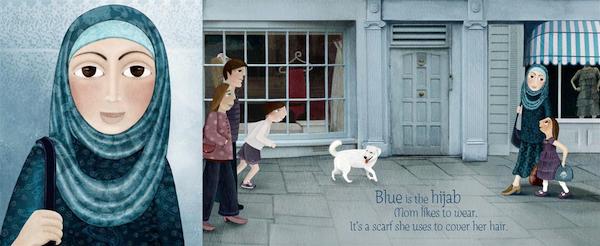
The rhyming poems are short and provide some context for unfamiliar terms (and there is a helpful glossary in the back too), but the rhymes are occasionally awkward. I only wish there were more things to label on each color's page besides the items focused on in the text. But these quibbles aside, this is a beautiful book that works well for introducing Islam to non-Muslim children, and will no doubt be an exciting find for Muslim families. The color primer framework and the everyday moments of a young child both provide a very accessible, universal way into this introduction to Islam.
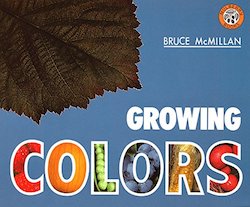
HarperCollins (1994); paperback, $8.50

I love Bruce McMillan's photographic picture books. Growing Colors is a labeling book featuring vegetables and fruits that showcases the major colors along with black, brown, white, and tan.
Each spread shows the colored sight word (in all-caps) for the color of that page along with two pictures. The first photo is a close-up of a plant growing in the ground or on a tree or in a bush. The second shows that same plant, but picked and moistened—looking more like the food on our plates.
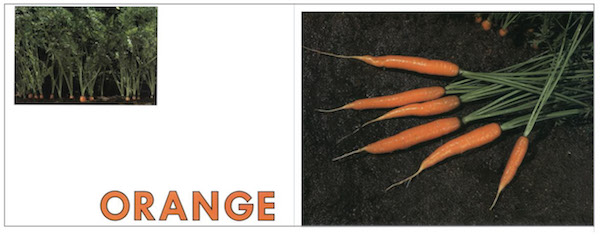
A few of the foods are oddball choices (there are purple beans, red potatoes, and brown peppers in the mix), but overall this is a delightful book that is perfect for a child who enjoys colors. It's great for food labeling and the photographs are ideal for helping a child learn about where our food comes from.